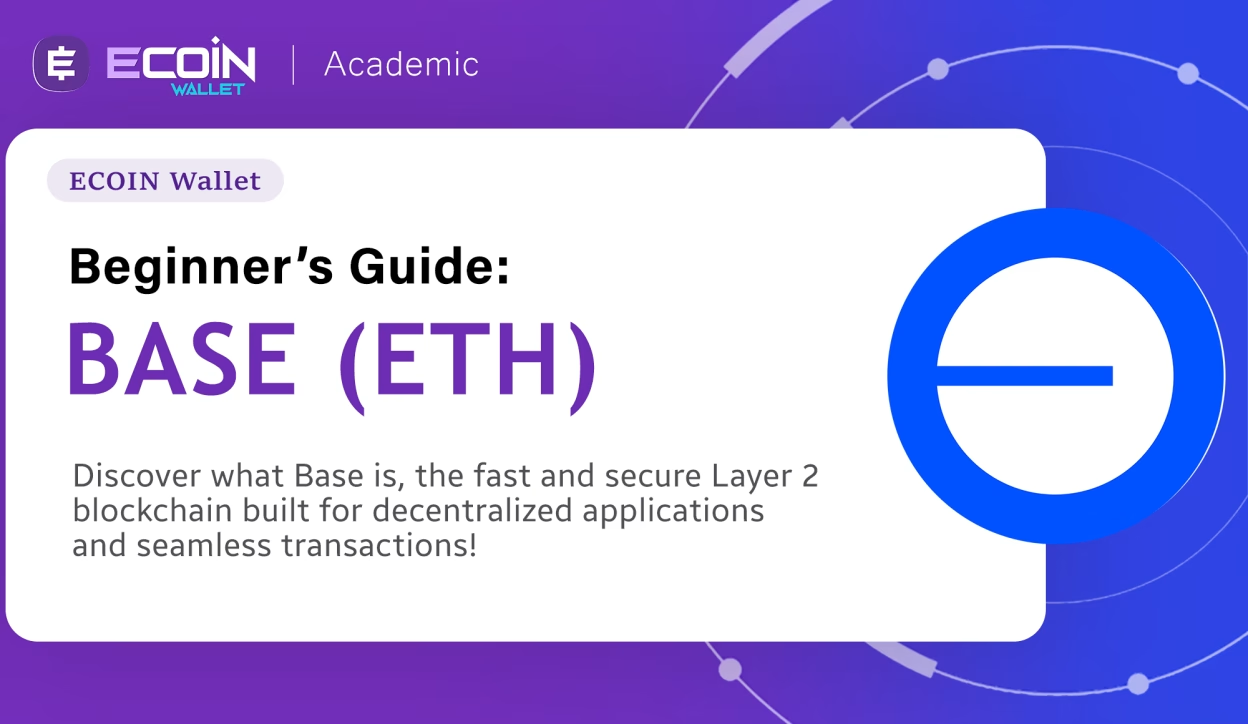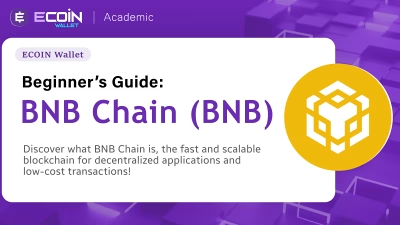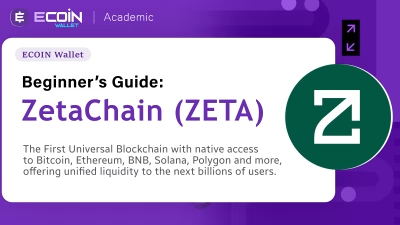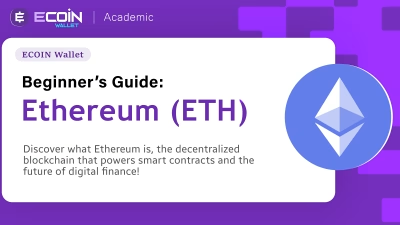Summary
- Base is an Ethereum Layer 2 solution developed by Coinbase in collaboration with Optimism, designed to offer a secure, cost-effective, and developer-friendly environment for building on-chain applications.
- Base is compatible with all EVM wallets and the Coinbase wallet.
- Base supports a wide range of use cases, including payment applications, token swaps, liquidity provision, token bridging, and launching DAOs.
Overview of Base
Base is an Ethereum Layer 2 (L2) blockchain officially launched on August 9, 2023, by Coinbase, a cryptocurrency exchange based in the United States. It attracted significant attention within the crypto community as it is the first blockchain launched by a publicly traded company.
Developed in partnership with Optimism, Base runs on the OP Stack, an open-source and standardized development stack that powers Optimism. Base enables developers to create decentralized applications (DApps) while leveraging Coinbase’s ecosystem, which includes 110 million verified users and over $80 billion in assets.
Base’s mission is to build what it calls a “Superchain,” powered by Optimism and supported by a developer community. It has made it clear that there are no plans to issue a new network token for Base at this time, so users should be wary of scammers offering fake Base tokens.
What is Layer 2?
Layer 2 (L2) refers to secondary protocols or frameworks built on top of an existing blockchain network (Layer 1), such as Ethereum. The main goal of Layer 2 solutions is to enhance the scalability, transaction throughput, and efficiency of the underlying Layer 1 blockchain, while preserving its security and decentralization.
Layer 2 solutions include technologies like state channels (e.g., Lightning Network for Bitcoin and Raiden Network for Ethereum), sidechains (e.g., Liquid Network for Bitcoin and Loom Network for Ethereum), and rollups (e.g., Optimistic Rollups and ZK-Rollups).
Some well-known Layer 2 networks are Optimism, Polygon, zkSync, and Arbitrum.
What is Optimism?
Optimism is a Layer 2 solution built on the Ethereum network, designed to increase scalability, transaction throughput, and reduce fees. It uses Optimistic Rollups, a technology that aggregates multiple off-chain transactions into one on-chain representation, which is then submitted to the main Ethereum blockchain.
Optimism relies on a fraud-proof system that assumes all transactions in the rollup are valid unless challenged. Users can submit fraud proofs within a specific period, and if fraud is detected, the malicious transaction is reversed, and the offending user is penalized.
What Are the Use Cases of Base?
Like other Layer 2 solutions, Base can be used for a variety of applications. Here are some examples of projects that have been built on Base:
- Payment Apps: Beam is a payment application that allows users to make transactions using USDC or the app’s native token, Eco. Users can log in with their Twitter accounts and pay gas fees using USDC or Eco. Beam also supports fiat-to-crypto and crypto-to-fiat conversions.
- Token Swaps: Base enables token swapping on decentralized exchanges (DEXs), where users can trade different cryptocurrencies. Some of the decentralized exchanges operating on Base include Uniswap, Maverick, and Dackieswap.
- Liquidity Provision: Users can provide liquidity on Base using various DApps, such as Uniswap, BaseSwap, and Dackieswap. Liquidity providers can earn fees from transactions within liquidity pools.
- Bridging: Base offers the Base Bridge, which is compatible with most Ethereum wallets, including MetaMask and Coinbase Wallet. This allows users to bridge ERC-20 tokens between Base and Ethereum. Bridging from Ethereum to Base typically takes a few minutes, while bridging from Base to Ethereum takes around 7 days.
- Launching DAOs: A Decentralized Autonomous Organization (DAO) is a blockchain-based entity where decisions are made by the community through smart contracts. Aragon, a protocol for creating DAOs, has introduced a no-code DApp on Base, simplifying the creation of DAOs.
Will There Be a BASE Token?
According to Base’s roadmap and official Twitter, there are no plans to issue a network token. However, projects sometimes initially state they have no plans for airdrops, only to later surprise the community with one as a reward for early contributors.
What Are the Benefits of the Base Network?
Key advantages of using the Base network include:
- Low Costs: Like other optimistic rollups, Base offers low gas fees, reducing transaction costs and improving throughput by processing transactions off-chain and consolidating them into one proof.
- Accessibility: As an EVM-compatible chain, Base enhances accessibility by allowing developers to use existing Ethereum tools, frameworks, and smart contracts across various platforms.
- Scalability: Layer 2 solutions like Base enhance blockchain capacity and transaction throughput, addressing bottlenecks and inefficiencies, leading to faster, more cost-effective transactions.
What Are the Disadvantages of the Base Network?
Some of the primary concerns related to Base include:
- Centralization: A key concern is the centralization of control, as Coinbase operates the only sequencer node on Base. This gives Coinbase significant influence over transaction processing. While a sequencer node is crucial for transaction ordering, the concentration of this power raises concerns. Coinbase has suggested the possibility of incorporating third-party nodes in the future.
- Long Withdrawal Periods: One drawback of Base is the long withdrawal times, taking approximately 7 days. This is due to Optimism’s fraud-proof system, which allows users to challenge transactions during this period. The long wait can negatively affect user experience.
- Security: As an L2 built on the OP Stack, Base faces some security challenges. One concern is the effectiveness of its fraud-proof mechanisms. Fraud-proof systems rely on participants to monitor and challenge invalid transactions, but these systems can face difficulties like incentive issues and vulnerability to data withholding attacks.
Conclusion
Since its launch, Base has attracted significant interest, surpassing one million users and $385 million in total value locked (TVL) by September 7, 2023. This impressive achievement ranks Base as the eighth-largest blockchain by TVL, ahead of popular platforms like Cardano and Solana.
As the first blockchain created by a publicly traded company, Base is opening up new opportunities for attracting a wider audience and bringing more people into the Web3 space. As the platform continues to grow, it’s crucial for users and developers to stay informed and make thoughtful decisions when interacting with Base.
Disclaimer: Content is for informational purposes and not investment advice. Web3 and crypto come with risk. Please do your own research with respect to interacting with any Web3 applications or crypto assets. View our terms of service.



